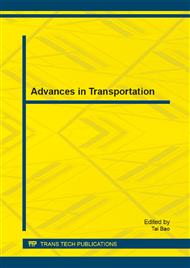p.927
p.931
p.935
p.940
p.945
p.950
p.955
p.959
p.967
The Dynamic Effect of Tax Revenue on Traffic Industry Growth in China
Abstract:
This paper applied panel vector auto-regressive (PVAR) technique to analysis the influence of tax revenue on traffic Industry Growth, with 31-provinces panel data over 2007-2011 in China. We obtained the following results. First, the relationship between traffic industry growth and tax is negative in the whole. The impact of the postal services sector on traffic growth is the strongest. Second, the contribution of transportation sector tax for traffic industry growth influence is the biggest, while warehousing sector is the smallest. Third, the response of traffic industry growth to postal services sector tax shock is the strongest, while to transportation sector shock is weak.
Info:
Periodical:
Pages:
945-949
Citation:
Online since:
January 2014
Authors:
Keywords:
Price:
Сopyright:
© 2014 Trans Tech Publications Ltd. All Rights Reserved
Share:
Citation:


